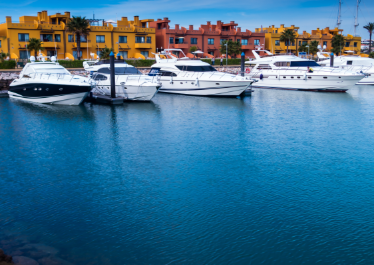All about solar charge controllers

Solar energy has become one of the most promising and environmentally friendly energy solutions. The right technologies are crucial to make the most of this renewable energy source. That's where MPPT and PWM controllers come in.
Also called charge controllers, solar charge controllers have been around for decades. They are used in almost all solar energy systems to optimize the charge of batteries from PV panels. Find out everything there is to know about solar charge controllers in this article.
What is a solar charge controller?
The solar charge controller is an electronic device connected between the solar panels and the battery. Its role is to regulate the charging process of the battery and ensure that the battery is properly charged, more importantly, that it is not overcharged.
Solar charge controllers are classified according to the maximum input voltage (V) and the maximum charge current (A). These two values determine the number of solar panels that can be connected to the charge controller.
- Rated current (A) = Maximum charging current.
- Voltage (V) = Maximum voltage (Voc) of the solar panel(s). This is the voltage read by a voltmeter when no load are connected.
- Voltage at Maximum Power (VMP or VPM). This is the maximum voltage when load is connected and panel operating at its peak performance.
While this technology has been around for many years, modern solar charge controllers have more advanced features. They ensure that the battery system is charged accurately and efficiently. The controllers also manage various functions such as the DC charge output used for lighting.
Residential installations, solar lighting systems, industrial applications... Solar charge controllers can be found in a wide range of applications. They are particularly popular for leisure vehicles such as motorhomes and pleasure boats. These means of transport require a constant battery charge to power the electrical appliances on board. Solar charge controllers maintain charge levels while avoiding overcharging problems in this context.
Most small charge controllers (12V-24V up to 30A) are designed to charge battery only. They are used for special vehicles, van, sailing boats. For large installation MPPT solar charge controllers above 60A also includes a built-in inverter starting from 3KVA. They are specifically designed for small isolated off-grid power systems.
Read also: Alternator, charger, solar panel... Which solutions to adopt to produce electricity while protecting my battery park?

MPPT and PWM solar charge controllers
There are two types of solar charge controllers, the PWM and the MPPT. The latest are much more efficient especially in cold weather. It allows a much better quality of charge starting from 170W PV.
PWM solar charge controllers
Many solar chargers used simple PWM, or "pulse width modulation" technology. In this case solar charge controllers operate as a switch between the solar array and the battery. They use a basic quick switch to modulate or control the battery charge. The switch is then opened until the battery reaches the absorption charge voltage. Then the switch begins to open and close rapidly (hundreds of times per second) to modulate the current and maintain a constant battery voltage.
If this system works, the solar panel voltage is pulled down to match the battery voltage because PWM controllers cannot modulate the voltage. This has the effect of moving the panel voltage away from its optimum operating voltage (Vmp). This reduces the power of the panel and, therefore, its efficiency.
PWM solar charge controllers are cost effective option for small 12V systems. They are effective when one or two solar panels are used. That is, for simple applications such as solar lighting, camping and small device uses such as USB phone chargers. Note that if more than one panel is used, they should be connected in parallel, not in series.
MPPT solar charge controllers
MPPTs or "maximum power point tracking" are much more advanced than PWM controllers. They allow the solar panel to operate at its maximum power point, or more precisely, at the optimal voltage for maximum power output. As light levels vary throughout the day, the voltage and current generated by the solar panels also change. MPPT controllers constantly scan the power curve of the solar panels to determine the point at which the output power is at its maximum. They then adjust the charging voltage and current to maintain the system at this optimum point. With this smart technology, MPPT solar charge controllers can be up to 30% more efficient, depending on the battery voltage and the operating voltage (Vmp) of the solar panel.
As a general rule, MPPT charge controllers should be used:
- On all higher power systems using two or more solar panels
- When the panel voltage (Vmp) is 8V or more relative to the battery voltage.
What is an MPPT (Maximum Power Point Tracking)?
An MPPT is an efficient DC-DC converter used to maximize the power output of a PV solar panels or turbines. The first “Power Optimizer” the world’s first Maximum Power Point Tracker was invented in Australia in 1985 by Australian Energy Research Laboratories (AERL), and this technology is now used in virtually all grid-connected solar inverters and many solar charge controllers.
The principle of operation of an MPPT solar charge controller is quite simple: due to the variation in the amount of sunlight (irradiance) on a solar panel throughout the day, the panel voltage and current change continuously. In order to produce more power, the maximum power point tracker scans the PV voltage to find the "sweet spot" or best combination of voltage and current. The MPPT is designed to continuously track and adjust the voltage to generate the maximum power, regardless of the time of day or weather conditions.
Note: Typically, only high-end MPPT controllers can detect partial shadows or are capable of tracking multiple power points. With this smart technology, the efficiency of the solar panel increases and the amount of energy generated can be up to 30% higher than a PWM solar charge controller.
The advantages of MPPT controllers
MPPT solar charge controllers offer several significant advantages over PWM controllers.
Thanks to their ability to track the maximum power point of a solar panel, even when sunlight conditions vary, they are much more efficient. This means that MPPT controllers can optimize energy production even in partially shaded environments, unlike PWM controllers, which see their efficiency plummet in the presence of shadows. Indeed, by simply maintaining the voltage at a constant level, PWM controllers can suffer considerable energy losses under changing conditions.
MPPT controllers also offer greater flexibility in system design. They can be used on higher-power systems involving two or more solar panels. This ability to manage more complex systems makes them an essential choice for large-scale craft.
Moreover, as a clean energy source, solar power has a key role in the fight against climate change. The ability of MPPT controllers to optimize solar energy production offers them a promising future.
Dolphin Charger® products are suitable for a wide application such as backup power systems and solar and wind power. AC/DC battery chargers, DC/DC boosters, DC/AC inverters/chargers, batteries, battery managers, man-machine dialogue interfaces (HMI), as well as many accessories such as automatic smart relays, dc/dc converters, solar regulators, load balancers... Dolphin Charger designs, manufactures and distributes a complete range of robust and smart power conversion products and solutions. With our own team of engineers, we operate especially for the OEM and ODM market, with custom and communicating solutions perfectly adapted to your needs. You want to realize a project? Please contact us!
To cater to the demands of the recreational vehicle market, our dedicated team has innovated the Integral product - a remarkable three-in-one solution that stands out in the market. Integral seamlessly combines:
- A 25 amp + 15 amp dual-output booster
- A 250-watt MPPT regulator
- A 220V 15 amp charger
Think of it as the Swiss Army knife of energy conversion for vehicles on the move. Integral effectively addresses the unique compactness challenges of this sector. All three functions are elegantly integrated into a single, ultra-compact box measuring just 20.3 x 17.4 x 6.7 cm. You can easily mount Integral flat or vertically, and it comes pre-equipped with Lin & Bus Can - Bluetooth functionality.
To learn more about this groundbreaking product or explore our other energy conversion solutions, contact us!


